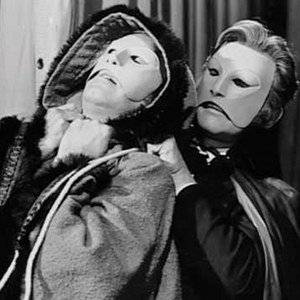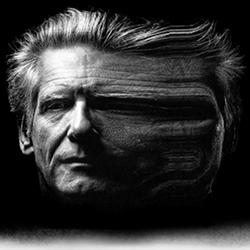Universal Monster Classics: Phantom of the Opera (1943)

PHANTOM OF THE OPERA - Several things stand out about Universal’s 1943 version of Phantom of the Opera when comparing it to the other films in the canon. First off, it is a remake of the classic silent version starring Lon Chaney, both films being adapted from the novel by Gaston Leroux. It is also the only picture in the Universal Classics collection that is in color, in this case a brilliant and vibrant Technicolor. This version of Phantom of the Opera also operates on a level of realism where the other Universal pictures do not. Of course, man cannot transform into beast, there are no vampires or monsters created from mad scientists, but the anger and insanity of a man who has been wronged and subsequently disfigured does exist on some level of the real world. The Phantom is not a supernatural being, but a man seeking vengeance.
Eighteen years after Lon Chaney frightened audiences with his beastly phantom, director Arthur Lubin brought Phantom of the opera to the screen from a different angle.

Eighteen years after Lon Chaney frightened audiences with his beastly phantom, director Arthur Lubin brought Phantom of the opera to the screen from a different angle. We are given a lengthy origin story of this phantom, a violinist in the Paris Opera named Erique Claudin played by the great Claude Rains. Erique is a man who garners no great deal of respect from his peers, but he is a passionate man. He is in love with Christine Dubois (Susanna Foster), an up and coming singer in the opera house. He also has a concerto he would like to have played in an opera. When he hands over his concerto to the maestro, he is rejected, only to hear his music being played later, behind closed doors. This sends Erique into a blind rage, and in a confrontation acid is thrown into his face. He flees the room, never to be seen again in his current form.
From here, the story takes its familiar footing. Erique becomes the phantom, a mysterious figure haunting the opera house causing all sorts of chaos. He manipulates the cast of an upcoming Opera so that Christine may get her starring role. He also, in the most famous scene of both pictures, sabotages the opening night of an opera by cutting the chandelier loose from the ceiling. It falls and kills several audience members. Advancements in technology between the two films make this chandelier sequence tenser and ultimately more believable.
There is something slight about this picture when it is held up next to the others, perhaps because it is a remake of a classic.
This version of Phantom of the Opera has always felt like a stepchild in the Universal Monsters canon. The original is an indelible classic, with one of the most memorable performances in cinema from Lon Chaney. There is something slight about this picture when it is held up next to the others, perhaps because it is a remake of a classic. But I enjoy this version on a different level. The Technicolor is a wildly vibrant transfer on the screen, and it adds to the melodrama in the story. And of course there is the notion that a film about an opera house is served well by sound. The original is a haunting masterwork of silent cinema, but with the advent of sound the power of the opera jumps off the screen.
Claude Rains was a staple of Universal horrors at this point, having starred in both The Invisible Man and The Wolf Man before taking over as the phantom. This is a meatier role, where he is the center of the action. He was most certainly the focus of The Invisible Man, but he was unseen until the end. Rains has a burning intensity and a voice that outweighs his small stature as Claudin. The 1943 version of Phantom of the Opera will forever be mentioned second to the Chaney classic; however, there are certain elements that work better here than they did in 1925.
Related Posts
![]()
Larry Taylor
![]()
Latest posts by Larry Taylor (see all)




























